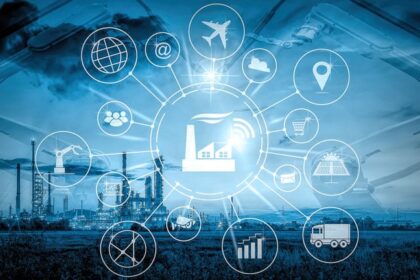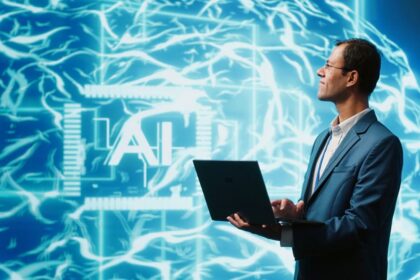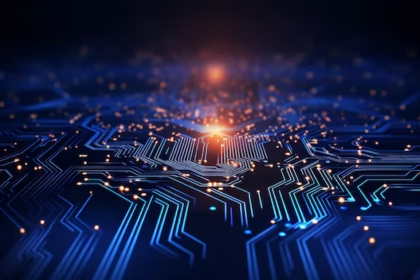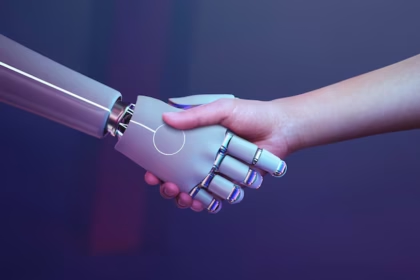The world is undergoing a profound transformation. The rapid advancement of digital technology has not only revolutionized the way we communicate and interact with each other, but it is also reshaping the very fabric of our work and daily lives. From the proliferation of smartphones and social media to the rise of automation and artificial intelligence (AI), the digital revolution has touched nearly every aspect of human experience.
As technology continues to evolve, its impact on human interaction and work is becoming increasingly significant. In this article, we will explore how digital technologies are transforming the way we connect with others, collaborate in the workplace, and live our daily lives. We will also examine both the benefits and challenges that arise as technology continues to shape human interaction and the workforce of tomorrow.
1. The Impact of Technology on Human Interaction
Digital Communication: Breaking Down Barriers
One of the most profound effects of the digital revolution is the transformation of communication. Advances in technology have fundamentally changed how we connect with others, transcending geographical boundaries and enabling instant communication across the globe. Tools such as email, instant messaging, video calls, and social media platforms like Facebook, Twitter, Instagram, and WhatsApp have made it easier than ever to communicate with friends, family, colleagues, and even strangers.
Social Media and Online Communities
The rise of social media has enabled people to form virtual communities based on shared interests, goals, and values. These platforms allow for a level of interconnectedness that was once unimaginable. People can easily stay in touch with loved ones, share experiences, and create global movements. While this has made the world feel smaller and more interconnected, it has also created new challenges, such as the spread of misinformation, online harassment, and issues related to data privacy.
Virtual Reality (VR) and Augmented Reality (AR)
Another technology that is beginning to revolutionize human interaction is virtual reality (VR) and augmented reality (AR). These technologies allow people to engage in immersive experiences that blur the line between the physical and digital worlds. VR can transport users to distant places or simulate complex environments, while AR overlays digital elements onto the real world through devices like smartphones or smart glasses. VR and AR are being used in a variety of fields, including education, entertainment, healthcare, and social networking, creating new ways for people to interact with one another and with the digital world.
2. Technology and the Changing Nature of Work
The digital revolution has also significantly transformed the workplace, changing the way people work, collaborate, and approach their careers. Technology has enabled new forms of work, enhanced productivity, and allowed for greater flexibility. However, it has also raised questions about job displacement, skills development, and the future of work.
Remote Work: The Shift to Digital Offices
One of the most dramatic shifts in the way people work has been the rise of remote work. While remote work has been growing steadily over the years, the COVID-19 pandemic accelerated this trend as businesses were forced to adopt digital tools to continue operations. Video conferencing platforms like Zoom, Microsoft Teams, and Google Meet allowed teams to collaborate and meet virtually, while tools like Slack, Trello, and Asana helped manage projects and tasks from anywhere.
The ability to work remotely has allowed employees greater flexibility and work-life balance. It has also led to the democratization of the workforce, as talent is no longer limited by location. Companies can hire from a global pool of workers, and individuals can take advantage of opportunities regardless of their geographic location.
However, the shift to remote work has also introduced challenges. Many employees struggle with isolation and burnout, especially as the boundaries between personal and professional lives blur. Additionally, some workers face difficulties accessing the necessary tools and resources for remote work, while others may feel disconnected from their teams and company culture.
Automation and Artificial Intelligence in the Workplace
Automation and AI are reshaping the workforce by taking over repetitive and manual tasks, freeing up employees to focus on more creative, strategic, and high-value work. Robotic Process Automation (RPA) is already being used in industries like finance, customer service, and manufacturing to automate tasks such as data entry, invoice processing, and customer queries. AI-powered chatbots are handling customer support, while AI systems are optimizing business processes, improving decision-making, and streamlining operations.
While automation and AI hold the potential to increase efficiency and reduce human error, they also pose a significant threat to certain job sectors. Jobs that involve routine, repetitive tasks are most at risk of being replaced by automation, which may lead to job displacement for certain workers. On the flip side, new opportunities will emerge for those with advanced technical skills, particularly in fields like data science, machine learning, and cybersecurity.
The Gig Economy and Digital Platforms
The rise of digital platforms has also given birth to the gig economy, where individuals engage in short-term, flexible work arrangements rather than traditional full-time employment. Platforms like Uber, Airbnb, Fiverr, and Upwork have enabled people to offer their services and find work on-demand. Gig workers have the freedom to set their own schedules and work from anywhere, but they also face challenges such as inconsistent income, lack of benefits, and job insecurity.
The gig economy is reshaping traditional notions of work, with many people opting for freelance or contract work instead of pursuing long-term careers with a single employer. This shift has prompted discussions about worker rights, benefits, and protections in a rapidly changing labor market.
3. The Role of Technology in Education and Lifelong Learning
Technology is also reshaping the way people acquire knowledge and skills. In the past, formal education was limited to traditional classrooms, but today, digital tools are providing individuals with endless opportunities for learning, no matter their age or background.
Online Learning and E-Learning Platforms
Online education has grown exponentially in recent years, with platforms like Coursera, edX, Udemy, and Khan Academy offering courses from top universities and institutions around the world. E-learning provides individuals with the flexibility to learn at their own pace, making education more accessible to people in remote or underserved areas.
In addition to formal education, digital learning platforms are helping people acquire new skills throughout their lives. Microlearning (short, focused learning segments) and gamification are becoming popular methods of delivering education, particularly in the workplace, where employees can engage in on-demand training to acquire specific skills or knowledge.
AI and Adaptive Learning
AI is also making its way into the classroom, particularly through adaptive learning technologies. These platforms use data and algorithms to personalize learning experiences, adjusting the pace and content based on the learner’s progress and performance. This helps ensure that each student is engaged and challenged at the appropriate level, enhancing their overall learning experience.
4. The Challenges of the Digital Revolution
While the digital revolution brings a wealth of benefits, it also presents significant challenges. As technology continues to advance, society must address the ethical, social, and economic issues that arise.
Data Privacy and Security
With the increased reliance on digital platforms and devices, issues surrounding data privacy and cybersecurity have become more pressing. Personal data is being collected and stored by companies, governments, and tech giants, leading to concerns about how this data is used and protected. High-profile data breaches and cyberattacks have exposed vulnerabilities, highlighting the need for robust security measures and regulations.
Digital Divide and Access to Technology
The digital revolution has also exacerbated the digital divide—the gap between those who have access to modern technology and those who do not. While technology has the potential to empower individuals and improve quality of life, those without access to the internet or digital devices risk being left behind. Governments, businesses, and organizations must work to ensure that everyone, regardless of socioeconomic status or geographic location, has access to the tools and resources needed to thrive in the digital age.
Mental Health and Technology
As technology becomes increasingly integrated into our lives, concerns about its impact on mental health have risen. The constant bombardment of notifications, the pressures of social media, and the blurred boundaries between work and personal life can lead to stress, anxiety, and digital burnout. It is essential to find ways to balance the benefits of digital technology with the need for mental well-being.
5. The Future of the Digital Revolution: Embracing Change
The digital revolution is far from over. As new technologies such as 5G networks, blockchain, quantum computing, and biotechnology continue to emerge, they will likely bring even more profound changes to human interaction and work. The future will be shaped by the ability of individuals, organizations, and governments to adapt to and harness the potential of these innovations.
The key to successfully navigating the digital revolution is embracing change while remaining mindful of its challenges. The future of work will likely be characterized by greater flexibility, collaboration, and digital innovation. Meanwhile, human interaction will become increasingly digital, creating opportunities for global connections and new ways of living, learning, and working.
Conclusion: The Digital Revolution is Here to Stay
The digital revolution is a transformative force that is reshaping human interaction and work in unprecedented ways. Technology has made communication faster and more accessible, while also enabling new forms of work, education, and entertainment. As we move forward, it is crucial to remain aware of the ethical, social, and economic challenges that accompany these technological advancements.
By embracing technology responsibly, focusing on skills development, and ensuring that the benefits of the digital revolution are distributed equitably, society can ensure that the future is one where technology enhances human potential and creates new opportunities for all.
Key Takeaways:
- Technology is revolutionizing human interaction through digital communication, social media, and immersive experiences like VR and AR.
- The workplace is being transformed by remote work, automation, AI, and the gig economy, creating new opportunities and challenges.
- Education is evolving through online learning platforms, AI-driven personalization, and lifelong learning tools.





